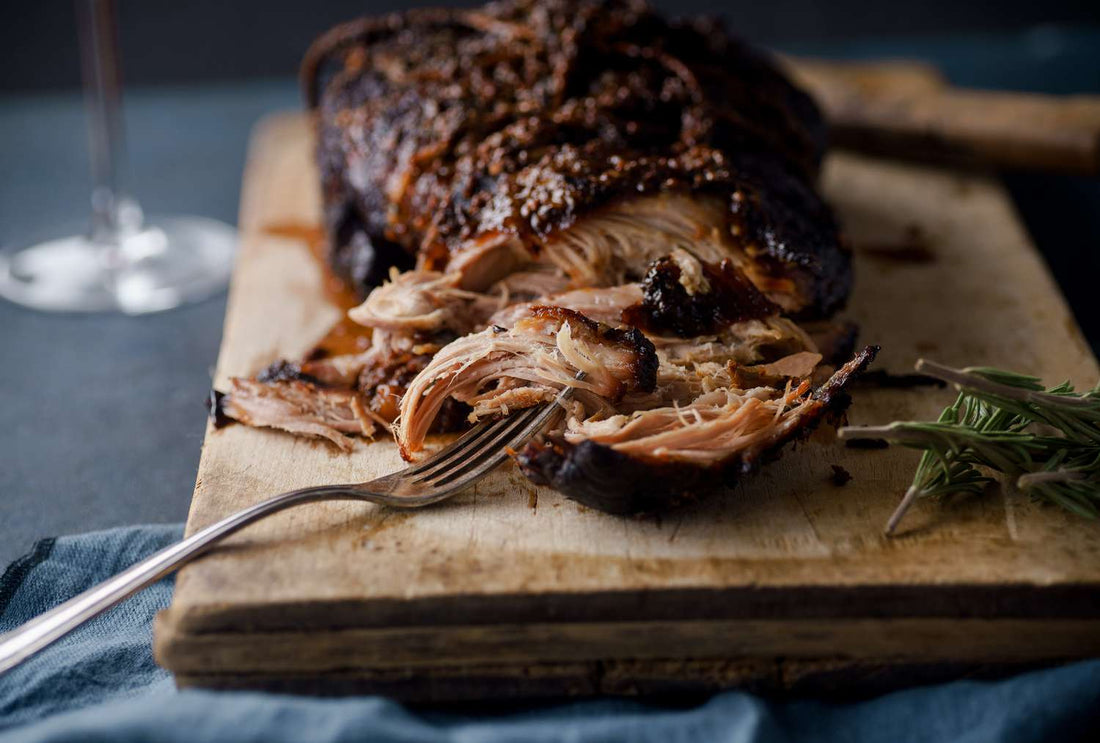When it comes to smoking meats, few cuts deliver the tender, flavorful results of a smoked pork butt. This versatile piece of meat, often referred to as a "Boston butt," is perfect for pulled pork, sliders, tacos, or even standalone servings. In this comprehensive guide, we’ll walk you through the best way to smoke a pork butt—ensuring you achieve juicy, smoky perfection every time.
What is Pork Butt?
Despite the name, pork butt doesn’t come from the rear of the pig. It’s a cut from the upper part of the shoulder, rich in marbled fat and connective tissue. This makes it ideal for low-and-slow cooking methods, such as smoking. The prolonged cooking process breaks down the collagen and renders the fat, resulting in tender, flavorful meat.
Why Smoke a Pork Butt?
Smoking a pork butt is one of the most rewarding barbecue projects you can undertake. The process infuses the meat with a depth of flavor you can’t achieve with other cooking methods. Additionally, the long, slow cook allows for a beautifully caramelized crust, also known as the bark—a prized feature among BBQ enthusiasts.
How to Smoke a Pork Butt: A Step-by-Step Guide
Step 1: Gather Your Ingredients and Equipment
To smoke the perfect pork butt, you’ll need:
Ingredients:
1 bone-in pork butt (6-10 pounds)
Your favorite BBQ rub (store-bought or homemade)
Yellow mustard or olive oil (as a binder)
Optional: Apple juice, cider vinegar, or a spritz mixture for moisture
Equipment:
A reliable smoker (pellet, offset, or kamado-style)
Smoking wood chips or chunks (apple, hickory, cherry, or pecan)
Meat thermometer (instant-read or probe-style)
Aluminum foil or butcher paper
Spray bottle for spritzing
Step 2: Prepping the Pork Butt
Trim Excess Fat:
While pork butt has a good amount of fat marbling, you’ll want to trim off any large, thick layers of surface fat. Leaving about ¼ inch is ideal for flavor without overwhelming fattiness.
Apply the Binder:
Rub a thin layer of yellow mustard or olive oil over the entire surface of the pork butt. This helps the dry rub stick better.
Season Generously:
Coat the pork butt evenly with your BBQ rub, pressing it into the meat. Be sure to cover every side, as this creates the bark during smoking.
Step 3: Preparing the Smoker
Choose Your Wood:
Different woods impart different flavors. Apple and cherry add a sweet and mild flavor, while hickory and pecan deliver stronger, smokier notes. For a balanced profile, mix woods.
Heat the Smoker:
Preheat your smoker to 225-250°F. This low-and-slow temperature is perfect for breaking down the pork butt’s connective tissue without drying it out.
Maintain a Water Pan:
Place a pan of water inside the smoker to help maintain moisture and regulate temperature.
Step 4: Smoking the Pork Butt
Place the Meat in the Smoker:
Position the pork butt fat side up directly on the smoker grates. This allows the fat to render and baste the meat as it cooks.
Monitor Temperature:
Insert a meat probe into the thickest part of the pork butt (avoiding the bone). Maintain a consistent smoker temperature of 225-250°F throughout the process.
Spritz Regularly:
After the first 2-3 hours, begin spritzing the pork butt every hour with a mixture of apple juice, cider vinegar, or water. This keeps the surface moist and enhances the flavor.
Expect the Stall:
Around 160°F internal temperature, the pork butt may hit a “stall” where the temperature plateaus. This is normal—the meat is sweating as the fat renders.
Step 5: Wrapping the Pork Butt
When to Wrap:
Once the internal temperature reaches 165°F, wrap the pork butt tightly in aluminum foil or butcher paper. This step, known as the Texas Crutch, helps the meat power through the stall and retain moisture.
Continue Smoking:
Place the wrapped pork butt back in the smoker and continue cooking until the internal temperature reaches 200-205°F. At this point, the meat is tender enough to pull apart easily.
Step 6: Resting the Pork Butt
Let It Rest:
Remove the pork butt from the smoker and let it rest, still wrapped, for at least 30-60 minutes. Resting allows the juices to redistribute, ensuring moist, flavorful meat.
Step 7: Shredding and Serving
Shred the Meat:
Using forks or meat claws, shred the pork butt into bite-sized pieces. Remove any excess fat, but keep the flavorful bark mixed in.
Add Sauce (Optional):
If desired, toss the pulled pork with your favorite BBQ sauce or serve it on the side.
Serve:
Serve the pulled pork on buns, in tacos, over rice, or as-is with a side of coleslaw, pickles, and cornbread.
Tips for Smoking Pork Butt Like a Pro
Invest in a Good Thermometer:
A reliable thermometer is crucial for monitoring both smoker and internal meat temperatures.
Be Patient:
Smoking a pork butt can take anywhere from 8 to 12 hours, depending on size and smoker efficiency. Don’t rush the process.
Experiment with Rubs and Sauces:
Try different spice blends and BBQ sauces to tailor the flavor to your liking.
Save the Drippings:
If you use a drip pan, save the rendered fat and juices to mix back into the shredded pork for added flavor.
Common Mistakes to Avoid
Skipping the Rest:
Skipping the rest period can lead to dry, unevenly flavored meat.
Opening the Smoker Too Often:
Resist the temptation to constantly check your pork butt. Each time you open the smoker, you lose heat and smoke.
Under- or Over-Smoking:
Ensure a balanced smoke. Too little won’t impart enough flavor, while too much can create a bitter taste.
Final Thoughts
Smoking a pork butt is an art and a science—a rewarding culinary adventure that results in one of the most satisfying barbecue experiences. With the right preparation, patience, and techniques outlined in this guide, you’ll master the craft and impress family and friends with tender, smoky pork butt that’s bursting with flavor.
Are you ready to fire up your smoker? Share your results and favorite smoking tips in the comments below!

